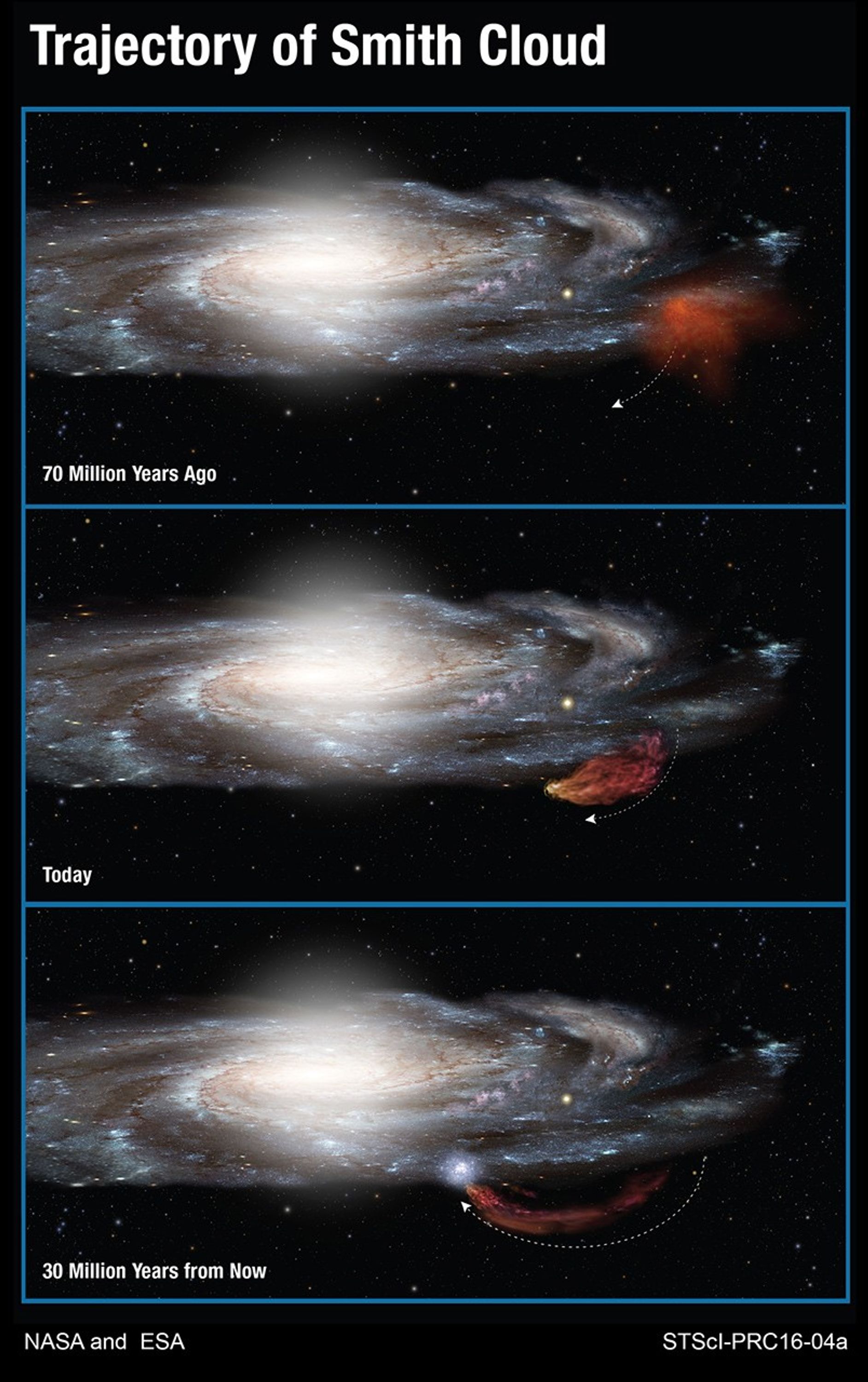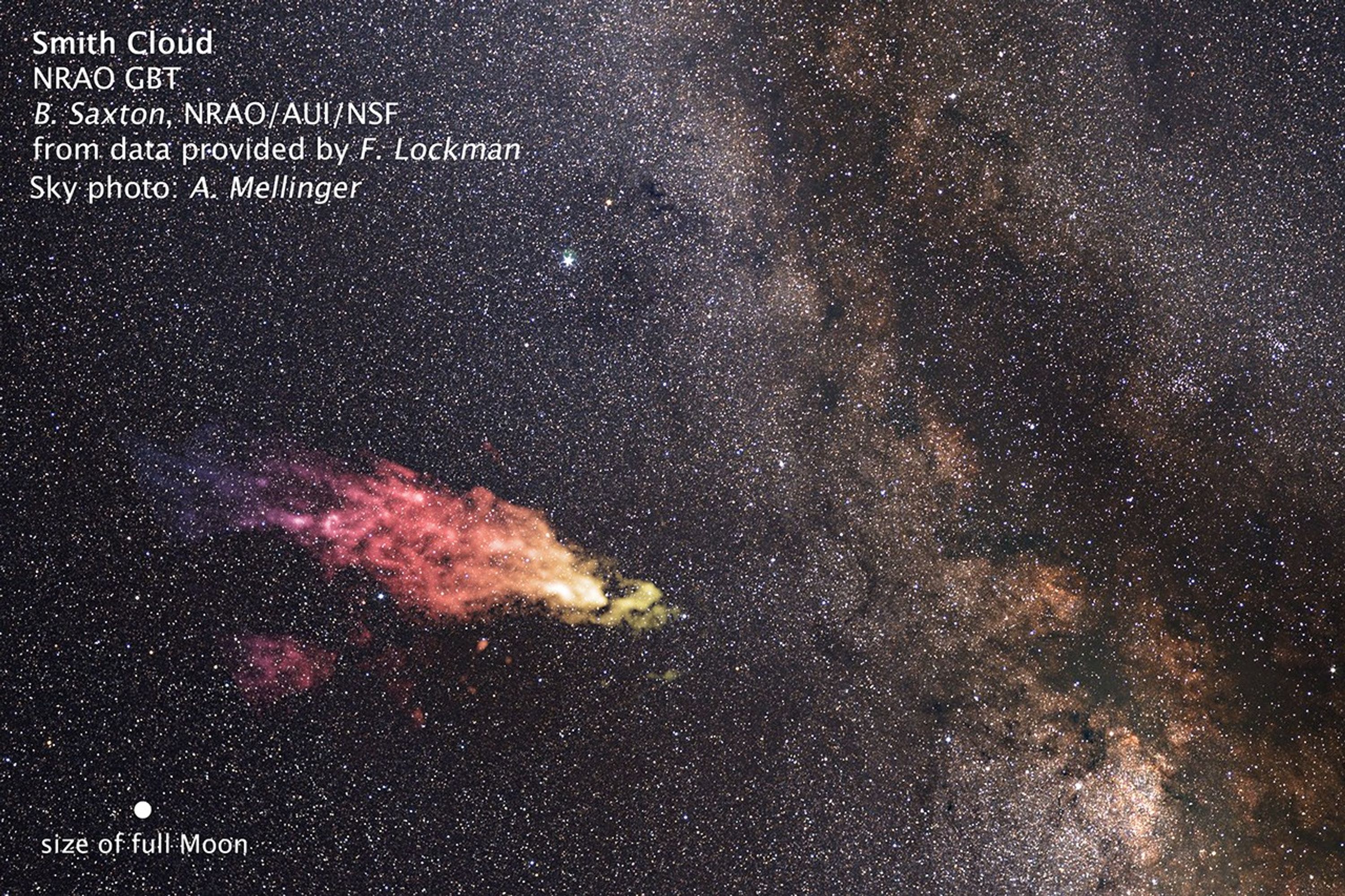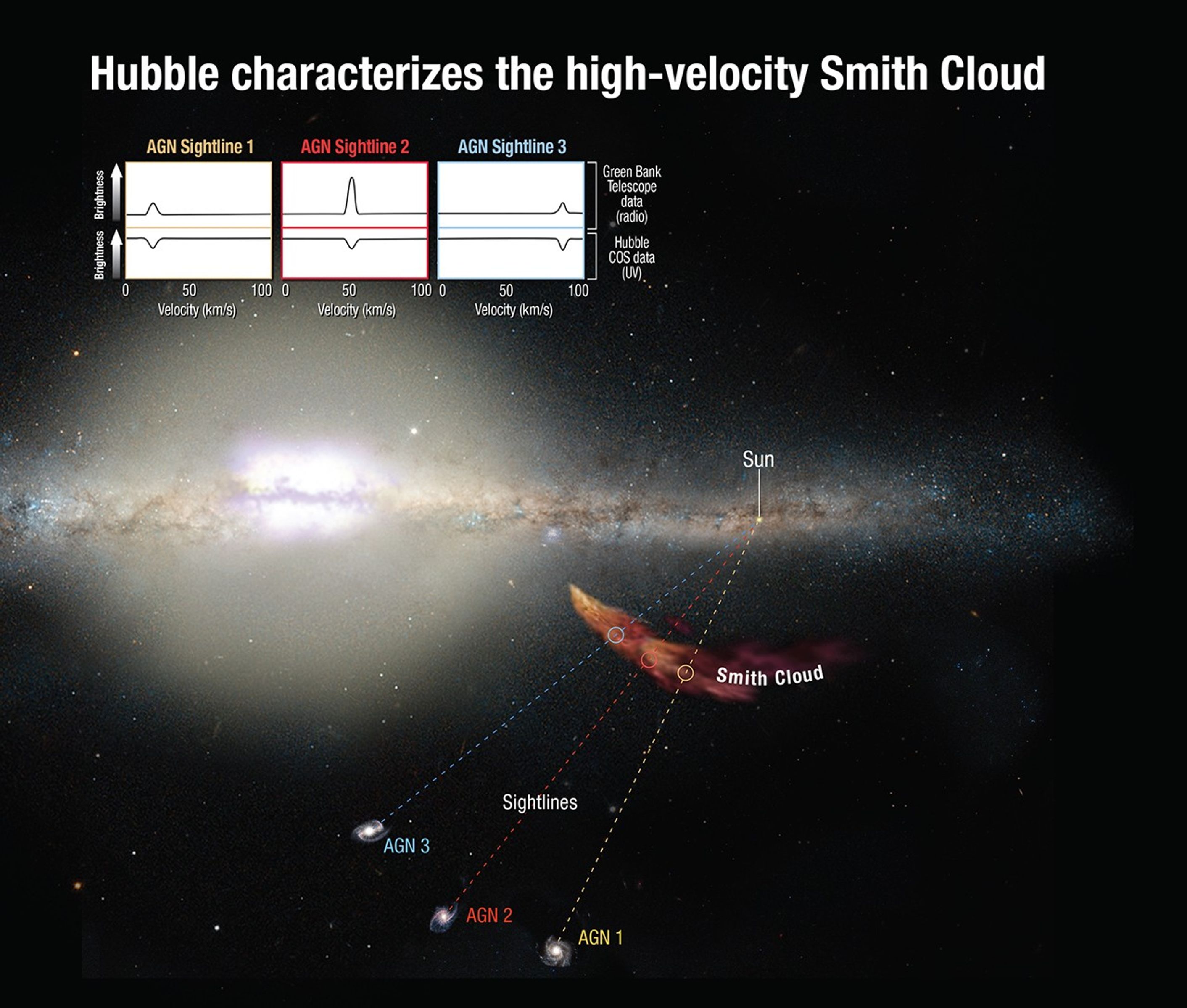1 min read
Trajectory of Smith Cloud

This diagram shows the 100-million-year-long trajectory of the Smith Cloud as it arcs out of the plane of our Milky Way galaxy and then returns like a boomerang. Hubble Space Telescope measurements show that the cloud, because of its chemical composition, came out of a region near the edge of the galaxy's disk of stars 70 million years ago. The cloud is now stretched into the shape of a comet by gravity and gas pressure. Following a ballistic path, the cloud will fall back into the disk and trigger new star formation 30 million years from now.
About the Data
- Data DescriptionData DescriptionProposal: A description of the observations, their scientific justification, and the links to the data available in the science archive.
Science Team: The astronomers who planned the observations and analyzed the data. "PI" refers to the Principal Investigator.The HST data were taken from proposal 13840: A. Fox and K. Sembach (STScI), F. Lockman (NRAO/Green Bank), B. Menard (Johns Hopkins University), N. Lehner (University of Notre Dame), A. Hill (Haverford College), K. Barger (Texas Christian University), F. Heitsch and D.V. Stark (University of North Carolina, Chapel Hill), M. Rahman (Johns Hopkins University), and R. Benjamin (University of Wisconsin, Whitewater). The science team for these findings includes: A. Fox (STScI), N. Lehner (University of Notre Dame), F. Lockman (NRAO/Green Bank), B. Wakker (University of Wisconsin, Madison), A. Hill (Haverford College), F. Heitsch (University of North Carolina, Chapel Hill), D.V. Stark (University of North Carolina, Chapel Hill/Kavli Institute, Kashiwa, Japan), K. Barger (Texas Christian University), K. Sembach (STScI), and M. Rahman (Johns Hopkins University). - InstrumentInstrumentThe science instrument used to produce the data.HST>COS
- Exposure DatesExposure DatesThe date(s) that the telescope made its observations and the total exposure time.October 23 - 28, 2014
- FiltersFiltersThe camera filters that were used in the science observations.Grating: G130M
- Object NameObject NameA name or catalog number that astronomers use to identify an astronomical object.Smith Cloud, Milky Way
- Object DescriptionObject DescriptionThe type of astronomical object.Active Galactic Nuclei Beyond the Milky Way's High-Velocity Smith Cloud
- Release DateJanuary 28, 2016
- Science ReleaseHubble Sees Monstrous Cloud Boomerangs Back to Our Galaxy
- Credit
Related Images & Videos

Size of Smith Cloud on the Sky
This composite image shows the size and location of the Smith Cloud on the sky. The cloud appears in false-color, radio wavelengths as observed by the Robert C. Byrd Green Bank Telescope in West Virginia. The visible-light image of the background star field shows the cloud's...

Hubble Characterizes the High-Velocity Smith Cloud
The infalling Smith Cloud does not emit light at wavelengths that the Hubble Space Telescope is sensitive to. However, Hubble's Cosmic Origins Spectrograph can measure how the light from distant background objects is affected as it passes through the cloud. These measurements...
Share
Details
Last Updated
Aug 17, 2025
Contact
Media
Claire Andreoli
NASA’s Goddard Space Flight Center
Greenbelt, Maryland
claire.andreoli@nasa.gov




























